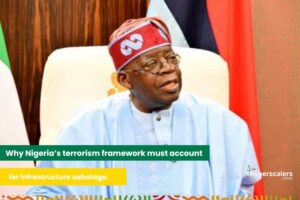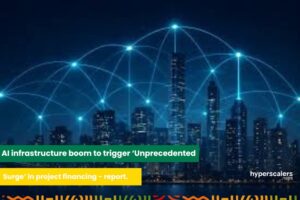Africa’s relationship with the internet has been a saga of soaring aspirations and harsh realities. In the pre-dawn days of connectivity, clunky satellite dishes were the sole gateways to the digital world. Names like Intelsat and Thuraya conjured images of dial-up groans and exorbitant bills, measured in tens of thousands of dollars for painfully slow connections. Despite satellite’s expected pervasive reach, its cost took it out of reach, with less than 200,000 internet users in Nigeria, Africa’s most densely populated country by 1999.
Then came the fiber frenzy. Subsea cables slithered across the ocean floor, terrestrial lines snaked through cityscapes, and the continent buzzed with the promise of lightning-fast downloads and lag-free streaming. Fiber optic cables became the gold standard, a shimmering mirage of data highways promising to revolutionize education, healthcare, and economic opportunities. Small operators to large hyperscalers invested in fiber broadband connectivity with implied impact on economies, governments, education and virtually every facet of existence. Yet, the cost remained a formidable barrier, excluding rural communities and leaving the digital divide as wide as ever.
Just as the narrative appeared settled, a new chapter unfolds with technology’s maverick, Elon Musk, investing in low-earth orbit satellites through SpaceX’s Starlink. This move marks a transformative moment, promising a superior and more ubiquitous internet experience. Other operators that ushed in the satellite renaissance include Eutelsat OneWeb, Avanti and many others. These nimble satellites, orbiting close to Earth, promise to deliver affordable, high-speed broadband to the most remote corners. For millions in Africa, it’s not a regression, but a lifeline. It’s a chance to leapfrog terrestrial limitations and join the digital age, finally bridging the chasm that has kept them on the periphery.
This isn’t a pendulum swing away from fiber, but a graceful pirouette towards a hybrid future. Traditional telecom giants like MTN are strategically waltzing with satellite players, forging alliances like T-Mobile and SpaceX, Orange and Eutelsat. The future, it seems, will be a tapestry woven from diverse threads – fiber will reign in bustling cities, wireless will blanket highways, and satellites will illuminate the hinterlands.
This strategic diversity unlocks new possibilities. Each technology plays to its strengths, ensuring no region is left behind. Innovation continues to waltz into the picture, with LEO constellations constantly evolving, pushing down costs and expanding coverage. Rural communities, long the forgotten faces in the connectivity dance, finally take center stage. Satellites bridge the geographical divide, reaching the underserved and marginalized, bringing education, healthcare, and economic opportunities within reach.
Africa’s internet odyssey, from clunky dishes to fiber frenzy and back to the sky, isn’t a simple loop. It’s a testament to the continent’s dynamic spirit, adapting to evolving technologies and prioritizing universal access. It’s a future where connectivity is not a privilege of the urban few, but a right enjoyed by all, regardless of location or circumstance. This is the true happy ending – a continent fully plugged into the digital world, dancing to the rhythm of its own innovation.
No single technology can answer Africa’s connectivity need. Diversity is imperative to meet Africa’s connectivity needs; as Deng Xiaoping wisely noted, “It doesn’t matter whether a cat is black or white, as long as it catches mice.” Our goal is to bridge the digital divide, empower marginalized communities, and fully leverage the internet—regardless of the technologies we adopt. The future of Africa’s internet is undoubtedly hybrid, emphasizing collaboration, convergence, and coopetition. Fiber thrives in cities, wireless serves on-the-go needs, and satellite reaches remote areas—creating a versatile ecosystem tailored to specific requirements.

The synergy between terrestrial and cosmic providers is paramount to unlock the full broadband potential, ensuring seamless integration of fiber, wireless, and satellite technologies for widespread coverage. This collaborative approach is key to maximizing connectivity.
The pinnacle of innovation in Africa’s internet journey is yet to come. Similar to the inverse relationship between subsea capacity and international broadband costs, we anticipate a comparable trend with Low Earth Orbit (LEO) satellites. Long-term operators must prioritize innovation and cost reduction, critical elements for achieving affordable and accessible connectivity for all. The horizon holds promising developments as we continue to push the boundaries of connectivity in Africa.





